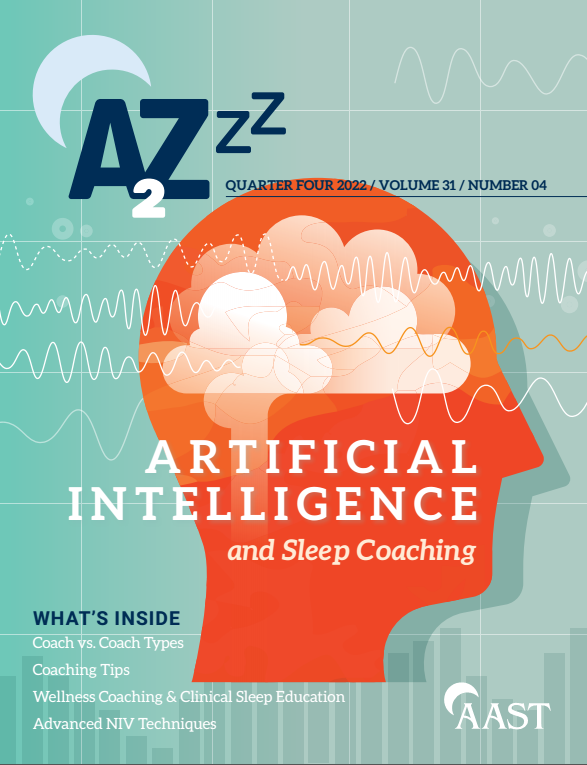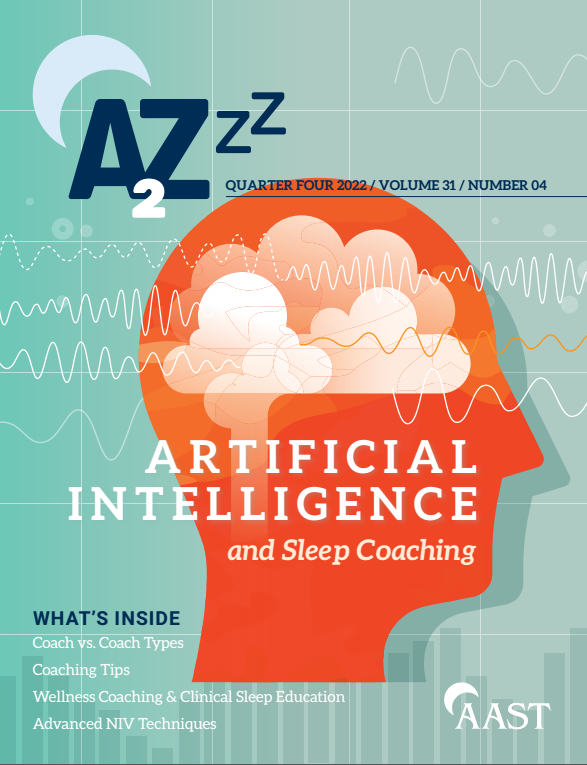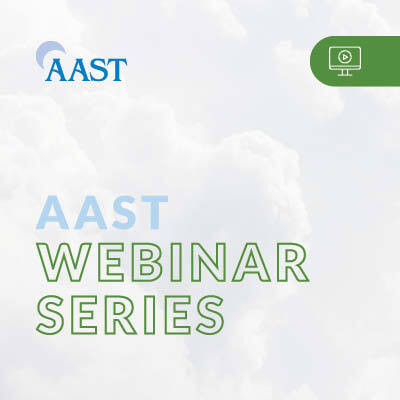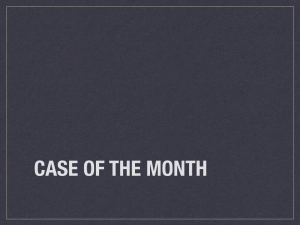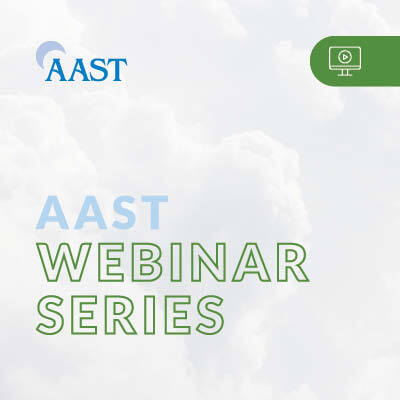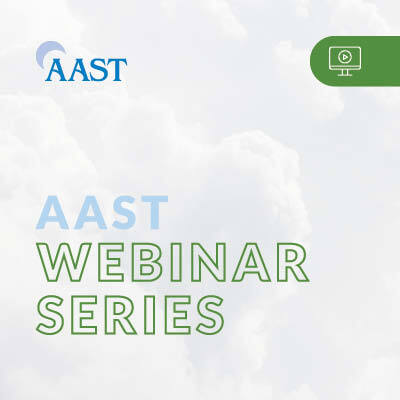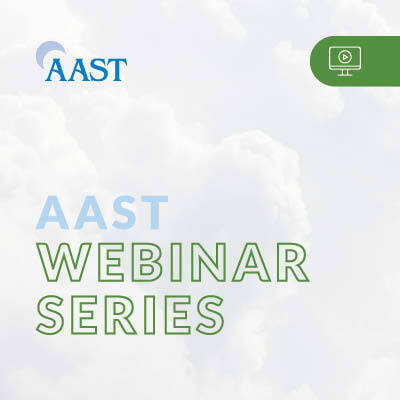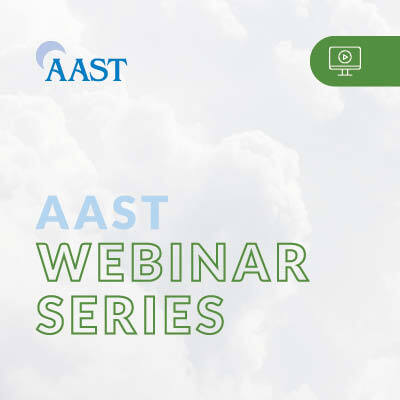
Recommended for You
-
Includes Credits
A2Zzz Q4 2022/ Volume 31/ Number 4.1
杰西塔吉梅内斯,大多数是一个获奖psychologist and board-certified leadership coach, and for 15+ years has been dedicated to the betterment of people through innovative programming stemming from the latest research in positive psychology, neuroscience and motivational psychology. She is an accomplished author and was a key team member in the creation and implementation of the Anger and Irritability Management System, a mobile app produced by the Mobile Behavior Design Lab and the National Center for PTSD. Currently, she serves as the vice president of Coaching Innovation at BetterUp, a virtual coaching platform dedicated to helping people live with greater clarity, purpose and passion.
AAST Managing Editor Monica Roselli recently spoke with Jiménez on what people are looking for in a coach, how a coach can be successful and more. Hear Jiménez's thoughts on what the world of coaching looks like today and where she believes the future of the profession is heading in this Q&A
- Register
- Member - Free!
- More Information
- Register
-
1 new product(s) added recently
Get the latest editorials, lessons, news and research from the publication by and for Sleep Technologists! AAST members may earn up to 2.0 AAST CECs by reading each issue.
Artificial Intelligence and Sleep Coaching - A2Zzz Q4 2022/ Volume 31/ Number 4
beplay2020网站登录AAST成员阅读A2Zzzand claim their credits online by the deadline can earn 2.00 AAST Continuing Education Credits (CECs) per issue, for up to 8.00 AAST CECs per year. AAST CECs are accepted by the Board of Registered Polysomnographic Technologists (BRPT) and the American Board of Sleep Medicine (ABSM).
To earn AAST CECs, carefully read the four designated CEC articles listed below and claim your credits online. You must go online to claim your credits by the deadline ofMarch 31, 2023. After the successful completion of this educational activity, your certificates will be available in the My CEC Portal acknowledging the credits earned.
- Register
- Member - Free!
- More Information
- Register
-
Includes Credits
A2Zzz Q4 2022/ Volume 31/ Number 4.1
Most research on the use of artificial intelligence (AI) in the sleep field has focused on its use in the diagnosis of obstructive sleep apnea and in polysomnography scoring. However, in recent years, the use of AI, particularly conversational AI, for sleep coaching people with insomnia has been of great interest, and recent findings have been encouraging.
- Register
- Member - Free!
- More Information
- Register
-
Includes a Live Web Event on 03/07/2023 at 5:00 PM (EST)
Obstructive Sleep Apnea (OSA) in children effects of 2-3% of all children, however in light of the rising prevalence of childhood obesity, the estimated prevalence has increased to 6-10% of all children. While the first line of therapy for Pediatric OSA in children consists of upper airway surgery via surgical removal off the adenoids and tonsils, it has become increasingly clear that surgery efficacy is limited in older and//or obese children. As a result, alternative therapies, including positive airway pressure (PAP) therapy has become mainstay for a lot of children. The application of PAP devices in children is unique and requires further attention to ensure that PAP therapy is successful.
Obstructive Sleep Apnea (OSA) in children effects of 2-3% of all children, however in light of the rising prevalence of childhood obesity, the estimated prevalence has increased to 6-10% of all children. While the first line of therapy for Pediatric OSA in children consists of upper airway surgery via surgical removal off the adenoids and tonsils, it has become increasingly clear that surgery efficacy is limited in older and//or obese children. As a result, alternative therapies, including positive airway pressure (PAP) therapy has become mainstay for a lot of children. The application of PAP devices in children is unique and requires further attention to ensure that PAP therapy is successful.
Objectives:
- Provide an overview of Obstructive Sleep Apnea in children
- Distinguish indications for Positive Airway Pressure (PAP) therapy in children
- Discuss obstacles of PAP adherence in children
- Share real world data of PAP adherence in children
Rakesh Bhattacharjee, MD, FRCPC, DABP(SM), CBSM, DBSM, FAASM
Director of Sleep Medicine, Rady Children’s Hospital
Associate Clinical Professor of Pediatrics, UCSD
Continuing Education:
- 1 AAST CEC after passing a short knowledge assessment in the AAST Learning Center
Access:
- Freewith AAST Membership
- $30for Non-Members
- Register
- Non-member - $30
- Member - Free!
- More Information
-
Includes Credits
A patient with COPD has a diagnostic portion with OSA and has a split night study using a variety of PAP platforms.
Description: A patient with COPD has a diagnostic portion with OSA and has a split night study using a variety of PAP platforms.
Presenter: Richard S. Rosenberg, PhD
Recorded: 7/12/2019
CEC Credit(s): 1.0
Target Audience: Sleep technologists and other allied health professionals.
Estimated Time to Completion: Approximately one hour
Category: Case of the Month
Access Period: 30 days from date of purchase.
- Register
- Non-member - $30
- Member - Free!
- More Information
- Register
-
Includes Credits
This presentation provides an understanding of common disorders affecting respiratory care to identify a patient’s ventilatory deficits and needs to determine how to affectively meet their needs. Dr. Namen discussed transcutaneous / end tidal CO2, respiratory rate and tidal volume and describe treatment pathways and treatment alternatives.
Description:
This presentation provides an understanding of common disorders affecting respiratory care to identify a patient’s ventilatory deficits and needs to determine how to affectively meet their needs. Dr. Namen discussed transcutaneous / end tidal CO2, respiratory rate and tidal volume and describe treatment pathways and treatment alternatives.
Learning Objectives:
- Understand common disorders affecting respiratory care
- Identify patient ventilatory deficits and needs
- Describe treatment pathways and treatment alternative
Speaker:
- Dr. Andrew Namen
Pulmonologist
Wake Forest Baptist Health
Recorded: 4/11/2022
CEC Credit(s): 1.0 CEC for AAST
Length: 1-hour
Category: AAST Webinar
Access Period: 30 days from date of accessLearning Objectives:
Understand common disorders affecting respiratory care
Identify patient ventilatory deficits and needs
Describe treatment pathways and treatment alternative
- Register
- Non-member - $30
- Member - $15
- More Information
-
A companion piece to the AAST Advanced Pediatrics e-Learning Course, this 108-page e-workbook will assist sleep health professionals become more proficient in pediatric care done in the sleep center. This one-of-a-kind e-learning resource follows the BRPT's Pediatric Sleep Certificate Exam Blueprint and is designed to help students close knowledge gaps in pediatric sleep care before sitting for the certificate exam.
Topics include: Pediatric Polysomnography, Pediatric Scoring, Pediatric Sleep Development & Sleep Related Breathing Disorders, Pediatric Treatment Options & Guides, Pediatric Insomnia & Circadian Rhythm Sleep Disorders, Pediatric Parasomnias & Hypersomnias, and Pediatric Sleep & Medical Disorders in Special Populations. Each chapter also includes questions as a check for knowledge comprehension with an answer bank.
- Introduction: The Clinical Sleep Health Professional
- The Technologist’s Path to Sleep Care Management
- Sleep Basics
- Evaluation of Sleep Disorders
- Patient Follow-Up and Management for the CCSH
- Patient Education and Motivation
- Sleep in Special Populations
- Clinical Presentation of Sleep Disorders
- Service Management
- Developing Multidisciplinary Programs
- The Future of Sleep Medicine and the CCSH Role
- Register
- Non-member - $95
- Member - $75
- More Information
-
Includes Credits
减少insom发现以证据为基础的技术nia in patients undergoing sleep testing or among those starting treatment of sleep apnea with positive airway pressure (PAP) therapy. Based on cognitive behavioral therapy for insomnia (CBTI), these simple interventions will reduce anxiety among patients and techs alike. Review breathing, progressive muscle relaxation, and guided imagery and employ these techniques in the sleep lab to help even the most challenging patients to sleep.
减少insom发现以证据为基础的技术nia in patients undergoing sleep testing or among those starting treatment of sleep apnea with positive airway pressure (PAP) therapy. Based on cognitive behavioral therapy for insomnia (CBTI), these simple interventions will reduce anxiety among patients and techs alike. Review breathing, progressive muscle relaxation, and guided imagery and employ these techniques in the sleep lab to help even the most challenging patients to sleep.
Learning Objectives:
- Learn how to help manage a patient's lab-based insomnia with simple interventions
- Optimize PAP therapy acclimatization with desensitization techniques
- Practice breathing, progressive muscle relaxation, and guided imagery to reduce anxiety
Speaker:
Brandon Peters, M.D.
Brandon Peters, M.D., is board-certified in both neurology and sleep medicine and currently practices at Virginia Mason Franciscan Health in Seattle. He has worked in sleep medicine since college with extensive clinical and research experiences in the field.Recorded: 4/26/2021
CEC Credit(s): 1.0 CEC for AAST
Length: 1-hour
Category: AAST Webinar
Access Period: 30 days from date of access- Register
- Non-member - $30
- Member - $15
- More Information
-
Includes Credits
This webinar discusses alternative therapies in patient diagnosis and treatment, the benefits of combination therapy, and follow up patient care plans.
This webinar discusses alternative therapies in patient diagnosis and treatment, the benefits of combination therapy, and follow up patient care plans.
Learning Objectives:
- Discuss how to impact patient outcomes
- Demonstrate improving outcomes with Combination Therapy
- Outline care plans for the CCSH
Speakers:
- Kevin M. Adley RPSGT, CCSH
Clinical Director
Midwest Dental Sleep Center - Andrea Ramberg, RPSGT, BA, CCSH
RPSGT Clinical Informaticist
EnsoData - Daniel D. Lane, MAPsy, BS, CCSH, RPSGT
PSG Program Coordinator
Orange Coast College
Recorded: 10/25/2021
CEC Credit(s): 1.0 CEC for AAST
Length: 1-hour
Category: AAST Webinar
Access Period: 30 days from date of access- Register
- Non-member - $30
- Member - $15
- More Information
-
Includes Credits
Dr. Patrick L. Fraley, MD describes the most recent advances in the diagnosis and treatment of sleep apnea and snoring. Covered topics will include home sleep testing, drug-induced sleep endoscopy, and neurostimulation for obstructive and central sleep apnea as well as snoring.
Dr. Patrick L. Fraley, MD describes the most recent advances in the diagnosis and treatment of sleep apnea and snoring. Covered topics will include home sleep testing, drug-induced sleep endoscopy, and neurostimulation for obstructive and central sleep apnea as well as snoring.
Learning Objectives:
- Discuss how to impact patient outcomes
- Demonstrate improving outcomes with Combination Therapy
- Outline care plans for the CCSH
Speaker:Patrick L. Fraley, MD
Associate Professor of Otolaryngology
University of Arkansas for Medical Sciences
Recorded: 6/27/2022CEC Credit(s): 1.0 CEC for AAST
Length: 1-hour
Category: AAST Webinar
Access Period: 30 days from date of access
- Register
- Non-member - $30
- Member - $15
- More Information
| Access Date | Quiz Result | Score | Actions |
|---|







